A few years ago I came across a batch of slender black pine seedlings from a corkbark parent. They were wired for the first time one year ago and are now ready for decandling.
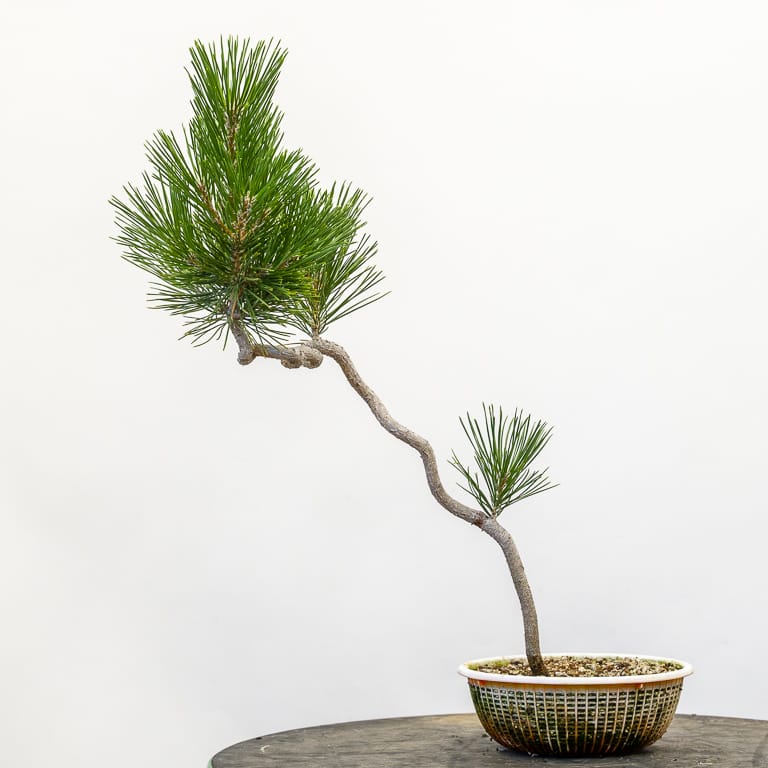
Seedling from corkbark pine
I shortened the apex and decandled the remaining branches before removing the old needles.
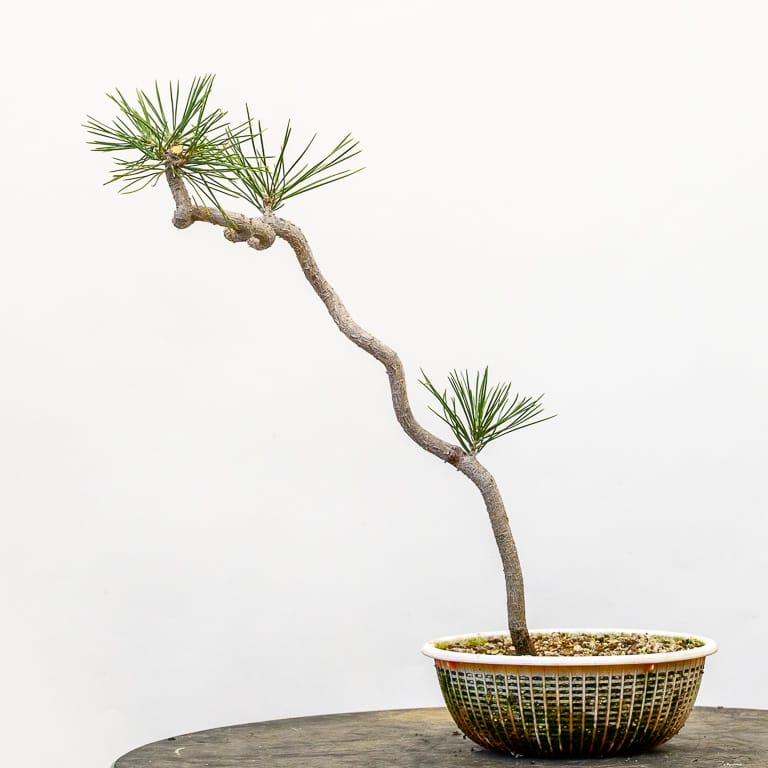
After cutback
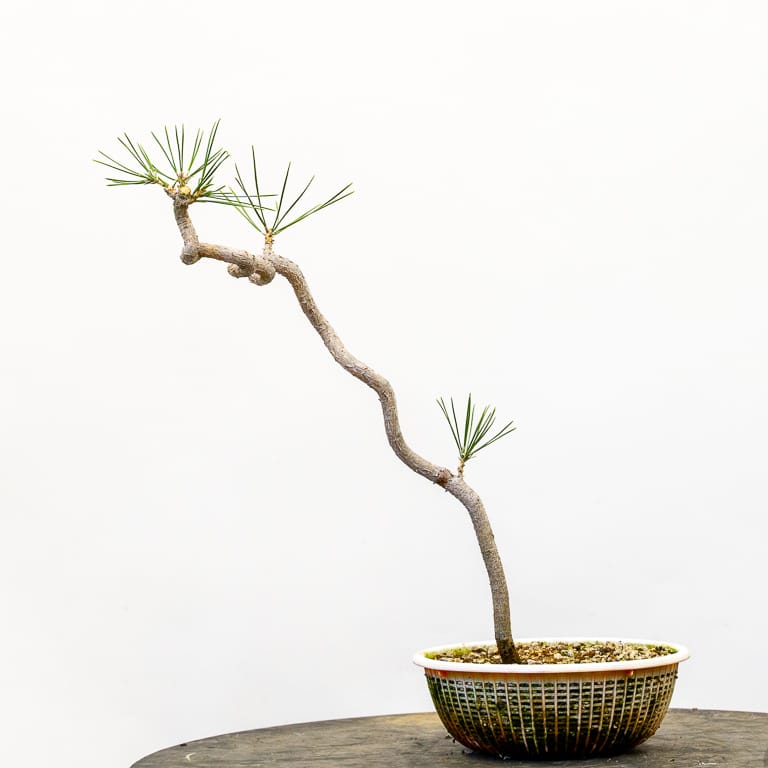
After thinning needles – 15″
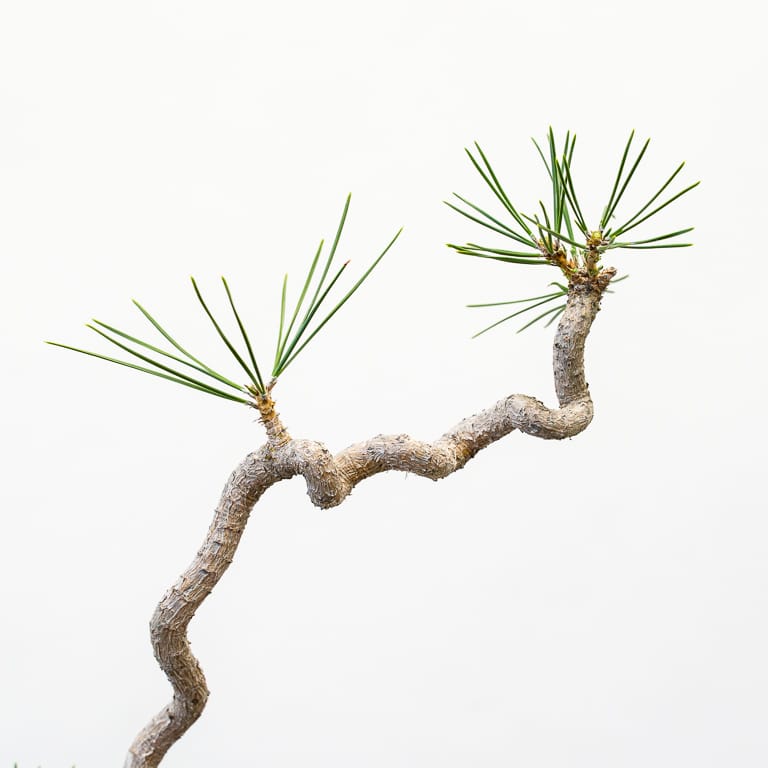
Trunk detail
I followed a similar process on all of the trees in this batch.

A sample of corkbark pine seedlings
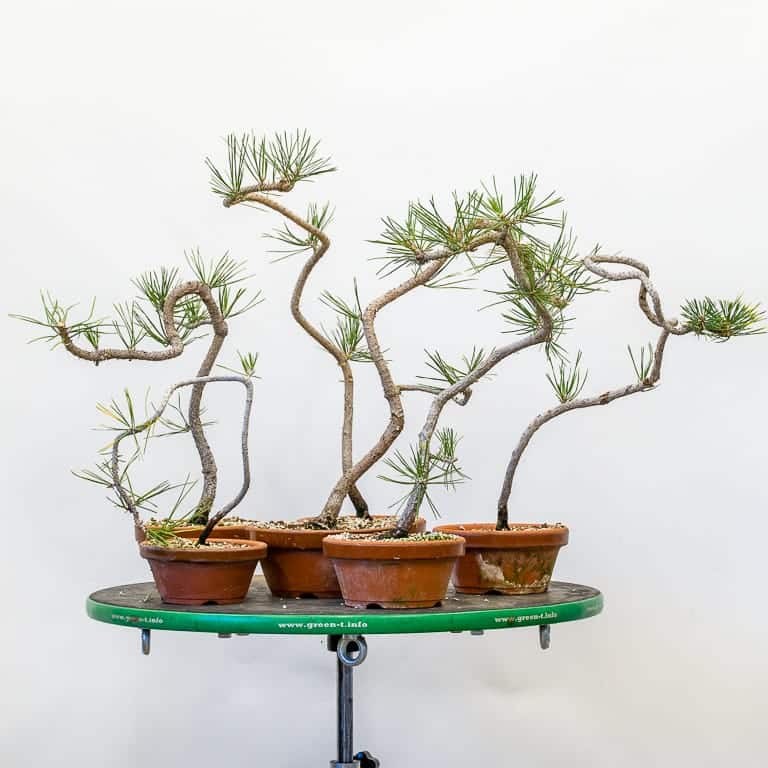
After cutback
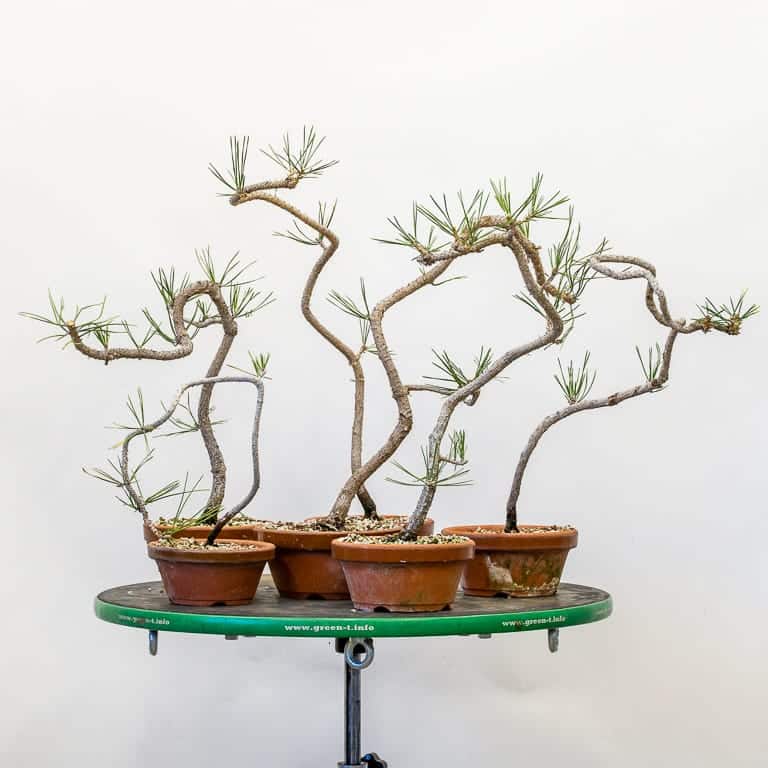
After pulling needles
It’s nice to be at this stage after working with these trees for several years. Over the next few years, the goal will be to improve branch density and rewire the trunks to set the final trunk lines.
Subscribe to Bonsai Tonight
New Posts Delivered Every Tuesday and Friday
Doug Zeeff says
Jonas, I am somewhat confused concerning the needle removal on Pine trees. Since you are doing this during the summer growing season, doesn’t it negatively affect the health of the tree? Will this be the final needle work you do for this growing season? I have 3 beautiful young JBP that I purchased from Julian Adams and want to keep them in good health while developing a stronger trunk. As always, thanks for sharing your knowledge.
Jason Ochoski says
I’m trying to wrap my Greenhorn head around the idea of decandling. To my eye, the bonsai look much more pleasant in the “before” photos. Could you give me some insight into the reasoning behind the procedure please?
Regards,
Jason
Jonas Dupuich says
Hi Jason! Bonsai do look much better before all of this pruning and plucking. My goal is for the trees to look their best in winter as that’s the traditional time for bonsai exhibits. By training the trees now I can get the results I want to see in winter. In the meantime, they’ll start looking relatively full again by the end of September.
Jonas Dupuich says
Hi Doug! Removing needles reduces the tree’s ability to make food for itself. I want the tree to grow more slowly so I’m removing needles. The main time for pulling needles is fall but I didn’t get to this work last fall so I’m doing it now. I’ll write more about needle thinning in fall.
Tony says
they look great!
Jonas Dupuich says
Thanks, Tony!
Pete says
Jonas, thanks to your great explanation and photos I’m beginning to get the hang of JPB better. (They’re not as easy as many experts say.)
Title of your segment here refers to young trees. Can I apply this to my older (30 yr old) trees? Thanks, -Pete (Sei Boku)
Jonas Dupuich says
Hi Pete! Yes, the basic technique applies to older trees, but I wouldn’t pluck them so thin. Here’s a primer on the topic that might help: https://bonsaitonight.com/2016/07/22/decandling-black-pine-bonsai-overview/
And as for what’s easy or hard about decandling, feel free to let me know and I’ll see what I can do to shed some light on the topic.
Michael M says
Jonas,
Nice post. It looks like you have turned a corner on JBP culture.
20+ years of active growing and watching, and now you are looking to a new direction. I am all ears. And watching with bated breath. (Yeah, I’ve been reading Hagadorn lately, sorry) MM
Jonas Dupuich says
Thanks Michael – and keep reading Hagedorn!
Mark says
Wonderful information accompanied with wonderful pictures. A question if I may. How do you identify whether you have a single flush pine and a multi flush pine? Elderica and Allepo for example. I purchased each of these but don’t know which technique to follow.
Thanks for your time.
Jonas Dupuich says
Thanks Mark! I need to start keeping a list: the only pines that can be reliably decandled are red, black plus a few domestic pines. I’d be comfortable adding aleppo and eldarica to the list as they’re super vigorous, and I hear the same about pitch pine and virginiana. Unfortunately the best way to make the determination is to try decandling the tree over multiple years and see how it responds.